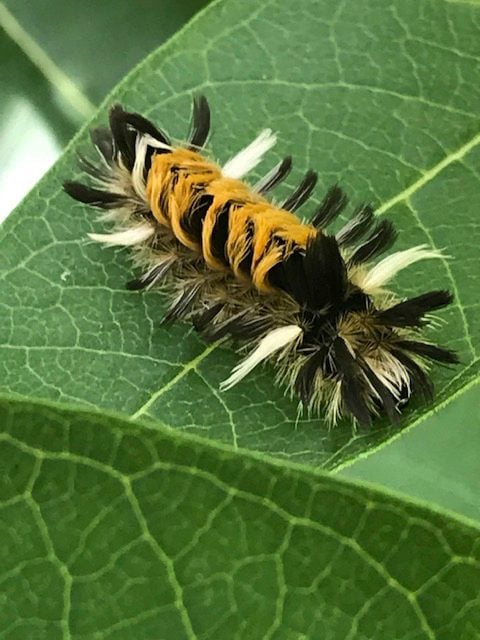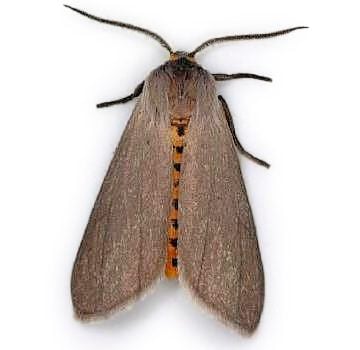Meet the Milkweed Tussock Moth and Caterpillar
Updated: Aug. 25, 2022
Milkweed tussock moth caterpillars are some of the most interesting caterpillars you can find in the garden—just plant milkweed to attract them!
What Does a Milkweed Tussock Moth Caterpillar Look Like?

Milkweed tussock moth caterpillars are nearly unmistakable as the chomp down on patches of their host plant. They’re one of the most interesting caterpillars you can draw to your garden.
According to backyard experts Kenn and Kimberly Kaufman, “The milkweed tussock moth (Euchaetes egle) looks most interesting in its larval stage. The caterpillar is festooned with tufts of black, white and yellow-orange hairs.”
You can find the caterpillars on milkweed plants throughout the eastern half of the United States. They live as far north as southern Canada and Maine, ranging south into Florida and west into Minnesota and Texas.
They look very different from monarch caterpillars, which also use milkweed as a host plant. Check out 8 crazy cool caterpillars you might find in your yard.

Elizabeth Griswold of Madison, Connecticut, spotted a milkweed tussock moth caterpillar (above) in her backyard.
She says, “After direct-sowing milkweed seeds one fall, I was pleased to see that they grew into a healthy patch the following summer. I spied this showy specimen—a milkweed tussock moth caterpillar—while looking for evidence of monarch activity, and I was happy to learn that milkweed hosts this species as well! I’m so glad I got this snapshot, because it was the only time I spotted this caterpillar.”
Quiz: How many types of caterpillars can you identify?
Can I Touch a Milkweed Tussock Moth Caterpillar?
Resist the urge to touch the caterpillar’s fuzzy body. It may look soft and tempting, but the hairs can irritate skin. Also, these moths should not be disturbed because they are a native species.
Meet another unusual caterpillar: the hickory horned devil.
What Do Milkweed Moth Caterpillars Eat?
Draw these crazy caterpillars into your yard with their main host plant, milkweed. It’s easy to grow in most backyards, just reference our ultimate guide to milkweed plants. Gardeners can collect seeds from milkweed pods to grow even more plants.
While these moths strongly prefer milkweed, they aren’t picky about the type. Try growing showy milkweed, swamp milkweed, native butterfly weed, or common milkweed.
Adult Milkweed Tussock Moths

This fuzzy creature eventually turns into an adult milkweed tiger moth—a much less interesting looking moth, compared to the colorful caterpillar. At first they can be difficult to identify. Kenn and Kimberly say, “The adult moth is much plainer than the caterpillar, with unmarked pale gray or brown wings.”
Look to the moth’s body for the clearest identification marks. They have fuzzy yellow-ish colored bodies with small black stripes.
Check out 12 pictures that will change the way you look at moths.
Milkweed Tussock Moth Nickname
This moth is also called a milkweed tiger moth. The nickname comes from the caterpillar, which sports orange and black stripes.
Moth vs butterfly: Learn how to tell the difference.
Do Milkweed Tussock Moths Hurt Monarchs?
Birds & Blooms reader Karen Funk of Hillman, Michigan, spotted a few milkweed tussock caterpillars in her garden. She asks the experts, “I found some caterpillars on my milkweed plants. Can they harm monarchs?”
Kenn and Kimberly: Several kinds of insects feed on milkweeds, and none will harm monarch caterpillars directly. Some can become so numerous that they reduce the amount of food available for the monarchs, but that seldom happens with milkweed tussock moths. If you’re worried, the solution is just to plant more milkweed.
Next, learn how to get rid of aphids on milkweed plants.




















